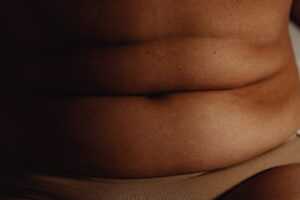Published by Dr MIguel Fernadez Calderón: 10/08/2023
Breast sagging is a common problem in women that occurs due to several factors. Among them we can mention age, pregnancy, breastfeeding, genetics, among others. The mastopexy is presented as a solution to lift the breasts and make them firmer. Here is a complete guide to understand the procedure.
What is mastopexy?
Mastopexy is a surgical procedure that aims to raise the position of sagging and flaccid breasts. In this way, their firmness is restored and their appearance is rejuvenated.
Breast skin is delicate and sensitive, so changes are normal over time. Age, weight changes, pregnancy and lactation, genetics and other factors play a role.
Although sagging is associated with large breasts, it also happens to women with small breasts. The resulting sagging of the breasts affects their appearance and self-esteem.
Mastopexy, also known as a breast lift, can be performed at any age, as long as the patient has completed her development. In addition, it is recommended if you do not plan to become pregnant in the near future.
During mastopexy surgery, the breasts are lifted, excess skin is removed and the areola and nipple are repositioned. This procedure can also be combined with augmentation mammoplasty if the breast is small or reduction if it is large.
After this surgery the patient will enjoy a firm and rejuvenated breast, which will restore her confidence in her appearance. Although here always influence the expectations you have about this operation.
Reasons to Consider Mastopexy
There are several reasons why a woman would consider breast lift surgery. Perhaps the first thing that comes to mind is aesthetics, as mastopexy improves the shape and appearance of the breasts. However, there are other reasons that may drive the decision to undergo this surgery.
Breast sagging due to aging is one of the main reasons. This is because the skin and tissues lose elasticity, which causes them to become flabbier and tend to sag.
Significant weight loss also leads to increased sagging because the skin does not fully retract after fat removal. Consequently, women resort to this surgery to lift the breasts and remove excess skin.
Women who have been mothers and have breastfed also undergo significant changes in breast shape and size. That is why mastopexy is part of the mommy makeover surgeries.
Also, genetics plays an important role in the appearance of the breasts and there are women with a tendency to have sagging breasts. For them, this operation is a valid alternative to improve the shape and achieve a rejuvenated appearance.
Mastopexy can also be applied as part of the treatment to correct breast asymmetry and even in the reconstruction process after a mastectomy.
At Sculpture Clinic we have specialists in breast surgeries, as well as facial surgeries such as bichectomy Madrid Spain.
Common mastopexy techniques
There are several techniques to perform a mastopexy and it will depend on each particular case to choose one or another. For this, the surgeon will evaluate the patient and determine which is the most appropriate method.
During the initial consultations he will explain in detail what he will do to correct the position and shape of the breasts.
Periareolar mastopexy
Periareolar mastopexy is applied in those cases in which the breast sagging is mild. The procedure consists of making an incision around the areola, the skin around the areola is removed and the nipple-areola complex is repositioned.
This type of surgery can also reduce the size of the areola if necessary. Likewise, a breast implant can be placed.
One of its advantages is that the scar is barely visible. However, periareolar mastopexy is not applied in any case, but when there is a need to remove a lot of tissue in the lower part of the breast.
Inverted "T" shaped mastopexy
This technique is so called because the resulting scar has the shape of an inverted "T". The incision is made around the areola, from the areola to the mammary sulcus and at the edge of the mammary sulcus.
In this case, it is performed when the sagging of the breasts is severe and tissue must be removed from the lower part of the breast. It is also indicated when the separation between the nipples is significant.
It also allows repositioning the nipple-areola complex and reducing the size of the areola.
Mastopexy in "L" shape
It is applied in cases where the sagging of the breasts ranges from moderate to severe. It is called "L", since the resulting scar has the shape of this letter. With this technique, an incision is made from the areola to the mammary fold and another horizontal incision in the line of the fold.

Types of mastopexy
In addition to the techniques mentioned above, which are applied to perform a mastopexy, we can also divide this procedure into two types: the mastopexy that does not involve the placement of prostheses, and the one that is done with implants.
Let's look at each one in detail:
Mastopexy with prosthesis
A mastopexy with implants is performed by combining a breast lift surgery with a breast augmentation surgery, in which breast prostheses are placed.
The objective is to lift sagging breasts due to the effects of gravity and flaccidity, and restore firmness, but at the same time the patient decides to change the size and shape of the breasts, for which the use of implants, which can be saline or silicone, is resorted to.
Mastopexy without prosthesis
The breast lift without resorting to the placement of prostheses is another option that also seeks to raise the position of the breasts and eliminate sagging. In this procedure, the surgeon removes the excess skin, giving a new appearance and shape to the breasts, but achieving a more natural result.
The major advantage of a prosthesis-free mastopexy option is that it can result in lifted, more youthful-looking breasts. This also means that the risks and complications associated with breast implants, which can affect the outcome of the surgery, imply a new surgery or even have a negative impact on the patient's general health, such as implant rupture or encapsulation of the prosthesis, are reduced.
Mastopexy procedure: step by step
The mastopexy procedure is usually an outpatient procedure, which means that the patient will return home hours after surgery. In some situations, however, she will need to remain hospitalized.
It can be extended up to three hours, depending on each case and the technique used. In addition, as mentioned before, it is possible to combine it with a breast augmentation or reduction.
It has become one of the most requested breast surgeries; however, there is still confusion and many doubts about mastopexy to be answered. Here we explain step by step how it is performed.
Preparatory consultation
The surgeon will make an initial assessment of the patient because everyone's needs are different. During the initial consultation he will ask about your lifestyle, for example, if you plan to have children after the surgery, if you smoke, etc. These situations can affect the results, so it is important to be honest with the doctor.
On the other hand, he will evaluate the patient's breasts in order to determine the best method to correct breast sagging.
Preparation for the surgery
During the planning, medical examinations will also be requested to know the patient's state of health. Also, the surgeon will explain in detail what you should do before and after surgery.
It is important that you arrange everything at home for after the operation. This way you will have everything ready when you get home from the clinic and you only have to worry about resting long enough.
Also prepare your transportation from the clinic to your home, since you will not be able to drive. And finally, ask someone to support you during the first days of recovery.
Surgical procedure
To perform the mastopexy, general anesthesia is applied and the surgery lasts between two and three hours.
The surgeon will make incisions to access the tissues to remove the necessary amount of skin and tissue. He will also reposition the areola and nipple, bringing them higher, and lift the breast.
If the breasts have little volume it is possible to increase it with implants or by lipofilling. On the other hand, if they are very large and the patient wants a reduction, it can also be done.
After the operation, the woman will have a firmer and more youthful looking breast.
Recovery and postoperative care
The patient must follow all instructions given by the surgeon to ensure a smooth recovery. Below, we indicate what to expect postoperatively and the care that is required.
- Pain and discomfort: as with any surgery, it is normal to experience pain and discomfort during the first few days. To treat it, the doctor will recommend the painkillers you should take and will recommend rest for several days.
- Swelling and bruising: it is also normal to appear due to tissue manipulation. It should disappear as the days go by. If they do not improve or there is fever, contact your surgeon.
- Physical activity and rest: the two days following the operation, rest should be almost absolute. After a week, the patient can return to normal activities that do not involve great effort or force. As exercises, walking is recommended for the first few weeks, but no weight should be carried until after one or two months, as indicated by the doctor.
- Care of the incisions: it is necessary to take good care of them so that the scars heal in the best possible way. This includes not getting them wet while you have the compressive bandage; avoid generating tension in the area; keep them hydrated; do not sunbathe, and if you notice a reddish color contact your doctor.
- Use of surgical bra: protect the breast with a surgical bra for the first few days. Then you can change it for another one without underwire.
Possible risks and complications of mastopexy
As with any surgery, mastopexy has some general and specific risks and complications. These include:
- Excessive bleeding: if it happens to you, inform your doctor as soon as possible.
- Infection in the incisions: this can occur if the scars are not well cared for, such as when handling them with dirty hands.
- Visible scars and/or keloids: some people are prone to form keloids. On the other hand, if not properly treated, scars may not heal well.
- Changes in sensitivity: this is normal during the first few weeks, but then gradually recovers.
- Asymmetry of the breasts: this usually occurs when not choosing a doctor specialized in this type of surgery.
- Difficulties with breastfeeding: in principle it does not affect milk production, but it may occur, depending on the technique used for the surgery.
Frequently asked questions about mastopexy
Who is the ideal candidate?
A mastopexy is a breast lift surgery ideal for patients who have sagging or drooping breasts. And who seek to perfect the shape, raise the height and improve the projection of the breasts, after a pregnancy or breastfeeding period, having lost a lot of weight or having asymmetry in the breasts.
In addition to these characteristics, some of the essential conditions that a patient who wants to undergo a mastopexy must meet is that she has already completed her breast development stage, which occurs around the age of 20. In addition, the person cannot be overweight, if she is, she must lose weight before the surgery.
It is also important that the candidate has healthy skin, good general health and realistic expectations.
It is recommended for those who have already completed their breastfeeding period, since after surgery there is a high probability of not being able to breastfeed again.
When to resume routine and exercise?
After breast lift surgery, one of the most common symptoms is pain and swelling. This is normal for the first few days and can be treated with painkillers and anti-inflammatory medications prescribed by the doctor. To reduce these symptoms and avoid complications, the surgeon will recommend no strenuous physical activity for at least six to eight weeks afterwards.
Getting back to the routine should be done little by little. During the first two or three weeks, physical effort should be avoided, and only light walking is recommended to improve blood circulation in the body. It is also important not to expose yourself to the sun, and go to the controls with the surgeon.
Conclusion: is mastopexy right for you?
Are you interested in having a mastopexy in Madrid Spain? This surgery is for you if you have sagging breasts for any reason. Sagging breasts affect the self-esteem of women, which affects their quality of life, and this surgery allows you to regain firmness.
Go to your doctor and discuss your case to define if mastopexy is the operation you need.









